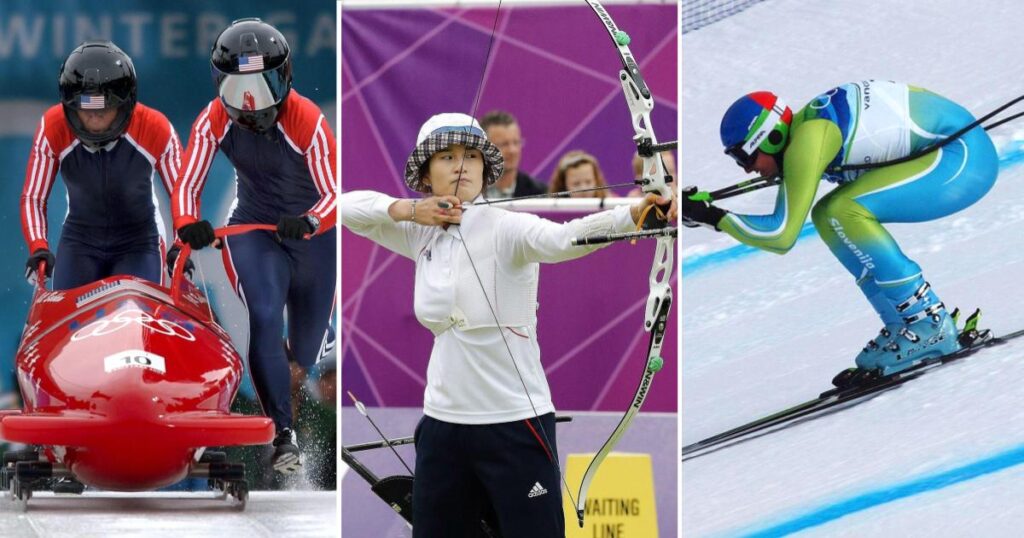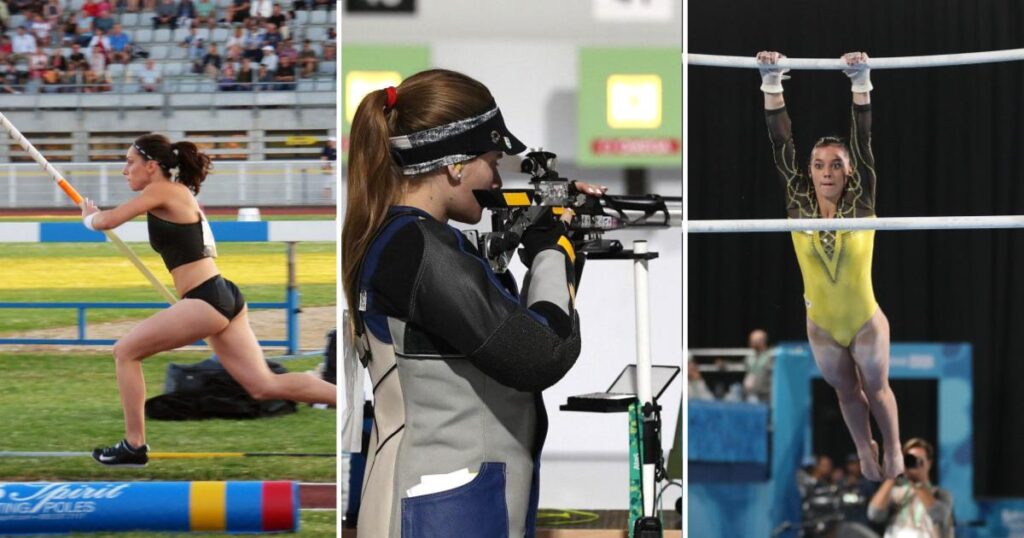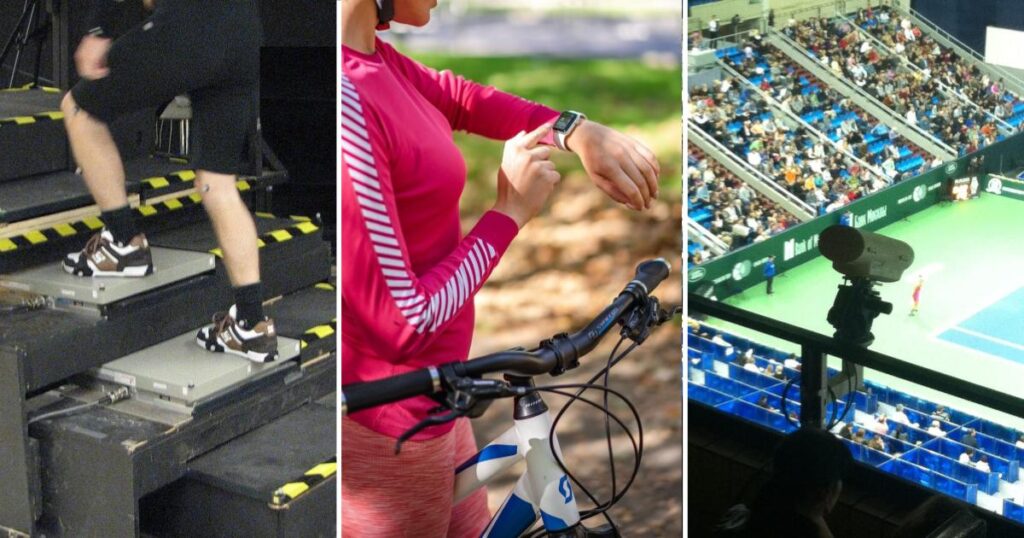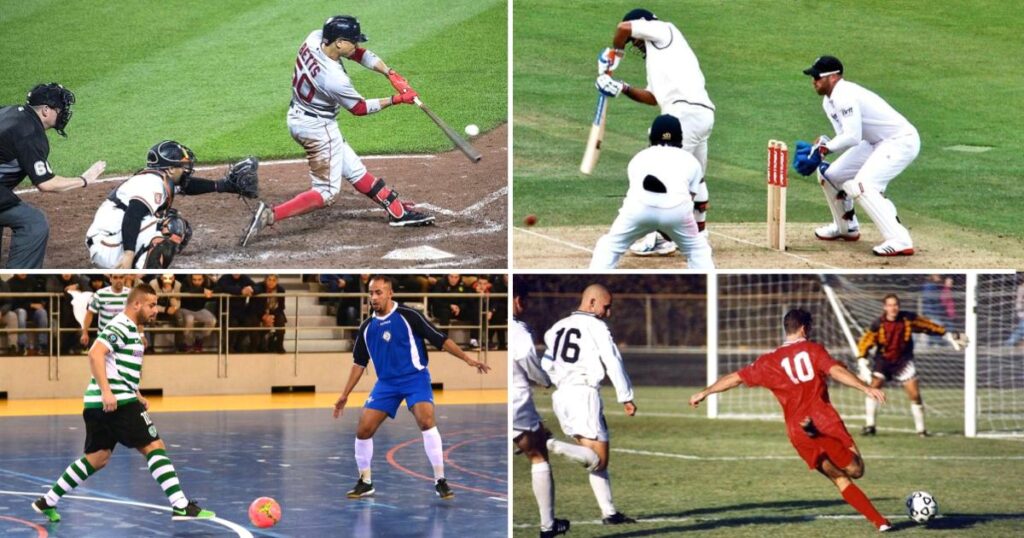First, let’s define what “less physical sports” means.
Before you start reading this article about Olympic sports that are non-physical or least physical in nature, let’s ensure we are on the same page when defining the term. In this post, we will discuss sports that require minimal physical activity and those that do not fall under the category of “contact sports”. Therefore, sports that involve a high level of physical exertion and intense bodily movement are not included in this post.
Lower physical activity does not always imply lower difficulty.
While the sports discussed in this article may involve or demand minimal physical movement or activity from the athletes, this does not imply that they are any less competitive or challenging compared to other sports. Each sport has its own unique set of requirements and demands a distinct skill set. For example, a game of darts may not involve intense physical exertion, but it demands unwavering poise and stability from the athlete while aiming the dart. These factors do not diminish the challenge posed by darts or other sports like archery and shooting, as they require immense levels of concentration and focus.
Since every sport is classified under a particular category, for example, archery falls under the category of shooting sports, it is crucial to note that the sports listed below are considered less physically demanding compared to other sports within their respective categories, not in general
1. Dressage

Equestrian has been an integral part of the Summer Olympic Games since 1912. Dressage is one of the three disciplines in equestrian sports, with horse riding as its central element.
Factors that make Dressage a less physically demanding sport
Restricted physical movement –
Dressage, as we know, involves horse riding as its primary element. In this discipline, a rider’s physical movements are restricted to the extent of controlling the horse. Therefore, it all comes down to reining in the horse.
The sport’s steady pace –
Although the sport involves horseback riding, the pace is very steady and controlled. The horse must execute intricate movements with the guidance of the rider, making it a delicate sport that relies heavily on the coordination between the rider and the horse.
Challenging aspects of Dressage
- As mentioned above, the complexity of this sport lies in its execution. Controlling a horse and its movements is a difficult task that the rider must perform. It takes a lot of effort to execute what the rider has perceived.
- Although the sport may appear less physically demanding, the actual work is carried out in the background. This involves developing coordination with the horse, controlling its movements, and achieving precision, all of which require a significant investment of time and mental effort.
2. Archery

After being included in the Olympic Games for the first few instances during the early 19th century, archery was absent from the Olympic Games for more than five decades. Archery, a shooting sport, demands intense focus and patience.
Factors that make Archery a less physically demanding sport
To aim accurately, one must stand still –
A prerequisite for a sport like archery is a poised and relaxed body posture. To hit the target, an archer needs to have a high level of concentration and focus, which can only be achieved by remaining still and focusing all their energies on the target.
Control over exertion –
Archery necessitates the archer’s complete control over the act of shooting the arrow and then precisely aiming it at the intended target. Therefore, physical exertion in this sport takes a secondary role, while control becomes of paramount importance.
Challenging aspects of Archery
- Focus is the key word when we discuss a sport like archery. It all comes down to how well an archer can maintain focus throughout the course of the game.
- Handling the bow is also an integral part of the sport. The bow used in professional archery is a complex piece of equipment and requires special attention. Accurate positioning of the bow is crucial for achieving perfect aim.
3. Rifle/ Pistol Shooting

We briefly discussed shooting sports earlier, and this brings us to two other sports in this category: rifle and pistol shooting. Similar to archery, these shooting events can also be categorized as ‘least physical sports.’ Shooting events have been a part of the modern Summer Olympics since their inception.
Factors that make Shooting a less physically demanding sport
Stable posture –
One who follows rifle shooting sports events can easily observe the stance that shooters must maintain during the event. They maintain this position to make shooting easier and to facilitate concentration with a relaxed body posture.
The sport is inherently slow-paced –
In shooting events, one cannot hurry the proceedings of the game. This is because it could adversely affect everyone involved, as one needs to take great care when dealing with rifles and pistols. Due to this reason, shooting events inherently require less physical activity compared to other individual Olympic sports.
Challenging aspects of Shooting
Shooting is a sport that revolves around one crucial aspect: accuracy. The shooter must dedicate and invest hours of practice to develop this essential skill. Even after dedicating a considerable amount of time and effort, one cannot simply arrive and begin aiming at the target with the expectation that everything will fall into place. It is never that easy. Athletes need to have a high degree of control over various aspects of the sport, including precision, hand-eye coordination, and body and arm positioning.
4. Golf

If anyone were to compile a list of peaceful sports in the world, golf would undoubtedly find its place among them. Like the other sports we have discussed in this post, golf has been an Olympic sport since the very beginning. But it only appeared in two Olympic events during that period and was subsequently removed from the Summer Olympics for over 100 years, finally making its comeback at the 2016 Olympic Games.
Factors that make Golf a less physically demanding sport
Low-intensity compared to other field sports –
Golf is a sport played on a vast, verdant field. While this is true, it does not require golfers to exert high levels of intensity. Golf does not require a high level of physical exertion from its players. Like other sports mentioned in this post, golf can be played at a moderate pace, making it suitable for people of all ages.
Recovery and longevity –
In a golf game, a golfer has ample time to recover between shots as they must traverse a significant distance on the course to reach their next target. We must also consider the fact that golf is a unique sport that allows people of all ages to play and compete. Therefore, a sport that caters to such a wide range of age groups can only remain relevant by maintaining a normal pace of play.
Challenging aspects of Golf
Golf, though comparatively a low-intensity field sport, is still a challenging sport in terms of physical stamina and grit when viewed in isolation. As the sport is played on a large golf course, a golfer needs to walk a considerable distance to complete the entire course.
Another challenging aspect of the sport is strategy. Playing golf requires the golfer to formulate a strategy and constantly adapt it to the course of the game according to the situation.
5. Luge

Luge is a winter Olympic sport that has been part of the program since the 1964 edition. Luge is an exhilarating sport in which athletes, known as lugers, ride sleds down an icy racecourse. To move and slide the sled, a luger must lie down on the sled face up. Another winter sport similar to Luge is Skeleton, which has a very similar format. The main difference between the two is that in skeleton racing, the athlete has to lie face down on the sled.
Factors that make Luge a less physically demanding sport
The static position –
What makes a sport like luge less physically demanding is the luger’s static or fixed position while sliding on the ice track on a sled. The sport is designed in a way that limits the athlete’s movement. Once a luger lies down on the sled with their face up, the only thing they can do is use their muscle strength to control the direction of the sled.
Minimal effort for generating speed –
Luge is a time-based sport, meaning that the luger who finishes the race with the fastest time wins. Although other racing sports, even those that fall under the category of winter games, such as ice skating and snowboarding, require athletes to make constant and rapid movements in order to maintain speed and generate pace, In luge, the downward slope of the racing course allows athletes to generate speed relatively easier. The luger provides the initial momentum to the sled, and once it has that, the slope helps generate more speed and momentum..
Challenging aspects of Luge
The very factor we discussed earlier, the static position of the luger, is itself a challenging aspect of this sport. Lying down on a sled and controlling it on the track with that body position is a challenging task. It requires the engagement of various muscles to keep the sled on track.
6. Bobsleigh

Bobsleigh is another winter Olympic sport, but unlike Luge, it is a team sport. It is a time trial sport that typically involves two or four team members depending on the event. It first appeared in the Olympic Games in 1924, which were held in France.
Factors that make Bobsleigh a less physically demanding sport
The sleigh that carries the players –
Unlike luge and skeleton, which involve riding a flat sled, the bobsleigh sled is specifically designed to accommodate four people simultaneously. As athletes sit one behind the other in the sled, their physical movement is naturally restricted due to the inherent design of the sled. A similar analogy can be drawn to water slides at water parks, where we sit in a tube with others and are limited in our ability to move freely.
Short race time –
In comparison to other racing winter sports, bobsleigh races are completed in shorter times. Additionally, bobsleigh is a team sport, meaning the physical effort required during the race is shared among the team members. In contrast, in individual sports like skeleton and luge, the athlete bears the sole responsibility for all exertion.
Challenging aspects of Bobsleigh
Coordination among team members is paramount in this sport. The initial “push” that the athletes give to the sledge and the subsequent positioning themselves under the sledge requires a keen understanding and teamwork among the players.
7. Rowing

Rowing is a water-based team sport that involves a varying number of players depending on the type of boat and competition. The maximum number of players in a rowing competition is typically eight. Rowing teams compete simultaneously in a race, and the team that crosses the finish line first is declared the winner.
Factors that make Rowing a less physically demanding sport
It requires upper-body strength –
In rowing, athletes use oars to propel the boat through the water. This requires upper body strength, particularly in the arm and back muscles, which are heavily engaged during rowing. It’s a team sport, so the effort required to propel a boat is shared among the team members. This aspect of rowing makes it less physically demanding for each individual rower. However, it is important not to underestimate the importance of upper body strength in this sport.
Good coordination results in ease –
A rowing team’s performance in a competition hinges on the coordination of the players involved in the race. While the sport does not demand high intensity from individual players, it does require exceptional coordination among them. Rowers must synchronize their every movement to propel the boat forward as fast as possible.
Challenging aspects of Rowing
In a sport like rowing, technique is a vital aspect. Previously, we discussed other essential attributes of the sport, such as coordination and synchronized teamwork. However, these attributes can only be achieved through the incorporation of sound technique that is feasible for each team member.
8. Alpine skiing

Do you enjoy ice skating? If so, you should consider taking up Alpine skiing. Skiing, as we know it, was originally a means of transportation in snowy valleys, and it still serves this purpose in many regions. However, as means of transportation improved, people began to view skiing more as a competitive sport. Alpine skiing thus made its debut in the Winter Olympics, with its first appearance in the 1936 games..
Factors that make Alpine skiing a less physically demanding sport
Skiing is all about balance –
Once you put on your alpine skis and begin the race, you as a skier must ensure one thing: that you maintain balance. Alpine skiing is a sport where one needs to keep their head stable and their body posture correct to gain and maintain momentum. Due to this, the sport does not require a high level of exertion from an athlete; in fact, if one exerts too much effort, they will eventually fail to progress further.
A skier needs to maintain proper posture –
In Alpine skiing, athletes lower their bodies and maintain a low body posture, keeping their upper bodies nearly parallel to the ground. This posture must be maintained throughout their run. This unique requirement in Alpine skiing limits the athlete’s ability to exert high levels of effort.
Challenging aspects of Alpine skiing
One important aspect of skiing that extends beyond the sport itself is physical fitness. Above, we discussed the two factors that contribute to Alpine skiing being considered a low-intensity sport: 1. Balance and 2. Posture. However, demonstrating these two aspects while skiing requires strength and endurance. Athletes not only have to work on their cardiovascular muscles but also their upper body strength.
9. Curling

Curling is a team sport played indoors. It has been a part of the Olympic Winter Games since the 1924 edition in France. Curling teams consist of four players, and both men and women can compete on the same team.In curling, teams are required to slide their granite stones as close as possible to the center of the house, compared to the position of their opponent’s stones.
Factors that make Curling a less physically demanding sport
It’s not a fast paced sport –
The sport’s moderate pace stems from its being played on an ice strip and the objective of aiming the stone towards the house center. Additionally, the distance between the house center and the ramp from which the players slide the stone is relatively short. These factors contribute to the sport being less physically demanding on players.
Teamwork is the key –
Teamwork is an essential element in curling. Unlike other sports, curling does not require high-level physical intensity. Sliding the stone on a flat ice surface necessitates precision and control from the athletes. Correcting the trajectory of the stone and aiming it towards the center of the target is a delicate task that demands more finesse than physicality.
Challenging aspects of Curling
Interestingly, the factors that contribute to the reduced physicality of these sports also turn out to be their most challenging aspects. As mentioned with curling, teamwork and control are two of the most demanding aspects of this sport. Team players must consider and manage numerous factors, such as the spin of the stone, its speed, force control, sweeping, and so on, to ensure a successful attempt.
Based on the examples of the aforementioned sports, we can confidently conclude that not all sports demand a high level of physical intensity. Some sports require athletes to develop specific skills that extend beyond intense physicality. Some sports, like Dressage and Golf, demand exceptional control and composure from athletes. Others, such as Archery and Alpine skiing, challenge athletes with their emphasis on precision and overall physical fitness.
Also see:
In this post, we discussed sports like archery and golf. Below, we’ve provided some insightful posts related to these sports that might interest you.
10 Things About Archery That Positively Impacts Your Life
Discover 10 Pro Golfers Who Didn’t Play in College, but Succeeded on the PGA Tour
Tags: Sports Curiosity





